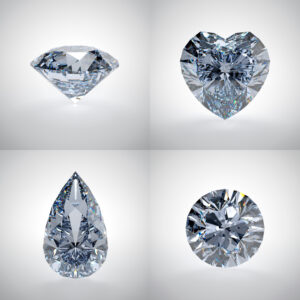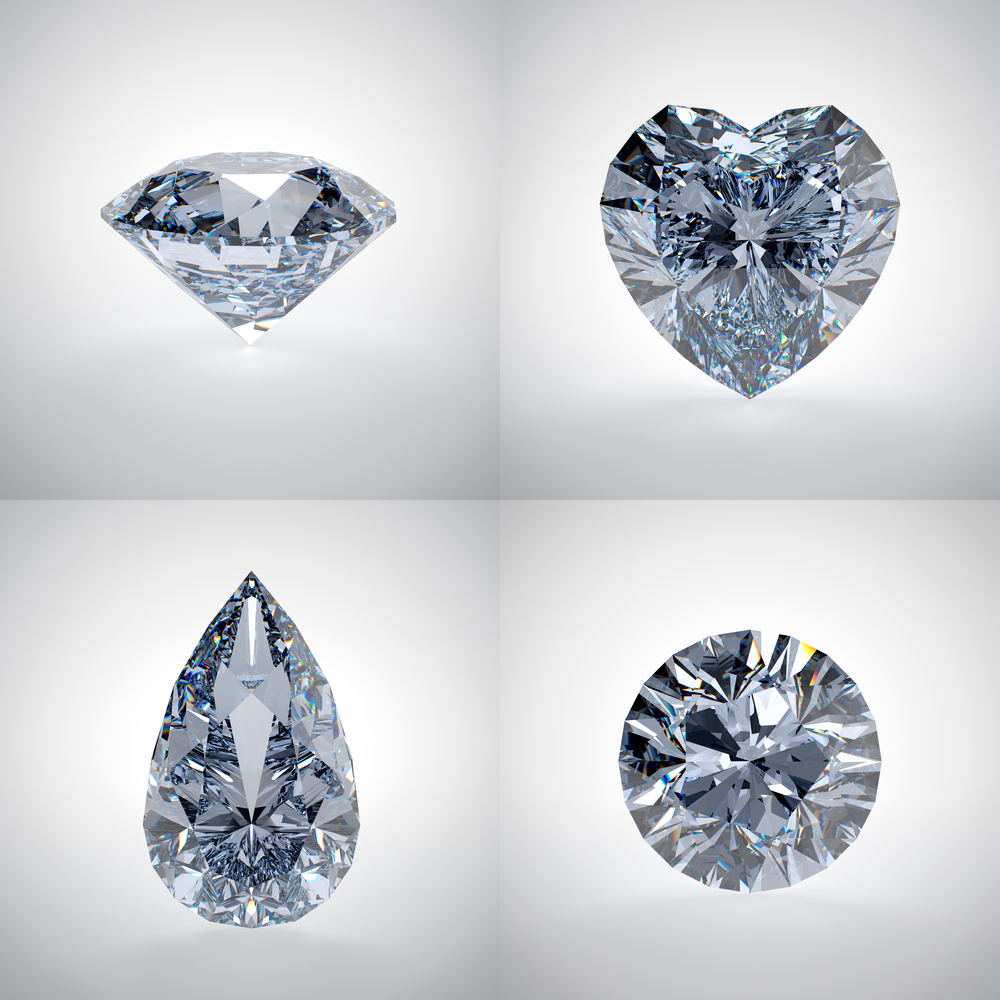
The choice between lab-grown and mined diamonds is a pivotal decision for those seeking a sparkling symbol of love or a dazzling piece of jewelry. Both options have their unique characteristics, and understanding the differences is essential to make an informed choice that aligns with personal values and preferences. Let’s delve into a detailed comparison between lab-grown and mined diamonds across various factors.
1. Origins and Formation
- Lab-Grown Diamonds: Created through advanced technological processes, lab-grown diamonds are cultivated in controlled environments using either High-Pressure, High-Temperature (HPHT) or Chemical Vapor Deposition (CVD) methods. These methods mimic the natural conditions under which diamonds form but with precision and efficiency.
- Mined Diamonds: Formed deep within the Earth’s mantle over millions of years, mined diamonds are the result of volcanic activity that brings them to the surface. This natural process involves high pressure and temperature, leading to the crystallization of carbon atoms into diamonds.
2. Ethical Considerations
- Lab-Grown Diamonds: Inherently conflict-free, lab-grown diamonds eliminate the ethical concerns associated with traditional diamond mining, such as human rights abuses and environmental degradation. Their production process is more transparent and traceable, providing consumers with confidence in their ethical choice.
- Mined Diamonds: Traditional diamond mining has been linked to issues like conflict financing and labor disputes. While the industry has made efforts to address these concerns through initiatives like the Kimberley Process, challenges persist, and ensuring the ethical provenance of a mined diamond can be complex.
3. Environmental Impact
- Lab-Grown Diamonds: The production of lab-grown diamonds typically has a lower environmental impact compared to traditional diamond mining. It reduces the need for extensive land disruption, water usage, and the release of carbon emissions associated with mining operations.
- Mined Diamonds: Diamond mining can lead to habitat disruption, deforestation, and soil erosion. The extraction process often requires significant energy, contributing to a higher carbon footprint. Responsible mining practices aim to mitigate these environmental impacts, but challenges remain.
4. Quality and Characteristics
- Lab-Grown Diamonds: Lab-grown diamonds exhibit the same physical and chemical characteristics as mined diamonds. They share the same brilliance, fire, and durability. The controlled growth process allows for customization, and the diamonds can be of high quality with fewer inclusions.
- Mined Diamonds: Natural diamonds come in a variety of qualities based on the cut, color, clarity, and carat weight (the 4 Cs). Mined diamonds may have unique characteristics shaped by the natural conditions under which they formed.
5. Cost
- Lab-Grown Diamonds: Generally more affordable than mined diamonds, lab-grown diamonds offer an accessible option for those seeking brilliance without the higher price tag associated with some natural diamonds.
- Mined Diamonds: The cost of mined diamonds can vary significantly based on factors such as carat weight, cut, and quality. Larger, high-quality mined diamonds can command higher prices.
6. Transparency and Traceability
- Lab-Grown Diamonds: The production of lab-grown diamonds is more transparent, with many producers providing detailed information about the diamond’s origin, characteristics, and the production process. This transparency empowers consumers to make informed choices.
- Mined Diamonds: While efforts like the Kimberley Process aim to prevent the trade of conflict diamonds, ensuring the full traceability and ethical provenance of mined diamonds remains challenging due to the complex supply chain.
7. Availability and Customization
- Lab-Grown Diamonds: The controlled production process allows for consistent availability, and consumers have the option to customize their lab-grown diamond jewelry. This customization includes choosing the size, shape, and other characteristics of the diamond.
- Mined Diamonds: The availability of mined diamonds depends on natural deposits, leading to variations in supply. While customization is possible, it is within the constraints of the natural characteristics of the diamonds.
Making an Informed Choice
The choice between lab-grown and mined diamonds ultimately depends on individual preferences, values, and priorities. Lab-grown diamonds offer an ethical and environmentally conscious alternative with customization options and affordability. Mined diamonds, with their unique natural beauty, have a long history and cultural significance. As consumers weigh these factors, they can make an informed decision that aligns with their values and desired characteristics in a precious gemstone.
